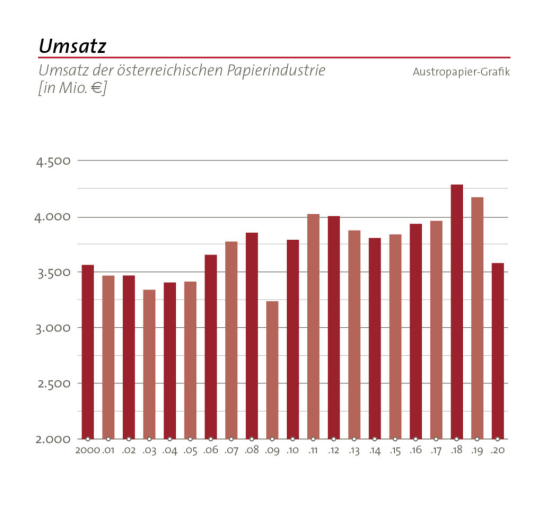Sulphuric acid is the most produced industrial chemical worldwide. At around 300 million tonnes per year, it is one of the most important chemicals, playing a significant role in many chemical processes. However, an end to the extreme shortage of sulphuric acid is not yet foreseeable.
In a brief overview of the most important industries, we show what consequences this could soon have if economic conditions remain unchanged.
Fertiliser industry
Sulphuric acid is mainly used in the production of phosphoric acid and ammonium sulphate. These in turn are the main ingredient in most chemical fertilisers. Ammonium sulphate fertilisers are produced by reacting sulphuric acid with ammonia. In the production of phosphate fertiliser, large quantities of sulphuric acid are needed to break down the rock phosphate, and the reaction produces superphosphate Ca(H2PO4)2/CaSO4.
Conclusion:
Fertiliser production is the most important end-use market for sulphuric acid, accounting for over 60 per cent of total world consumption in 2020. A continued shortage of sulphuric acid will therefore inevitably lead to a shortage of fertiliser. The global demand for fertiliser is approximately 2.4 million tonnes (2019).
Paper industry
In addition to ammonium sulphate, other sulphates are also produced by corresponding reaction with sulphuric acid. Examples include aluminium hydroxide and aluminium sulphate, which are used in large quantities in the paper industry and as flocculants in water purification.
Sulphuric acid is also used for pulp production. Pulp is mainly important for the production of graphic papers and tissue papers (toilet paper, handkerchiefs, paper nappies, etc.).
The Austrian paper industry produced less in the crisis year 2020 and had to accept a drop in sales of minus 14.2 percent - a minus that can be explained primarily by the demand gap for graphic papers, but also by significantly lower sales prices for pulp and paper.
With the gradual opening, an increased demand for graphic papers can be expected again. Examples would be menus in the gastronomy sector, advertising for events, travel catalogues or the magazine circulation at the hairdresser.
Conclusion:
Shortages of sulphuric acid and sulphates are detrimental to paper production volumes and could soon put the paper industry under pressure.

Source:
Austropapier
Ore production
Sulphuric acid is a critical component for metal production. Since many ores are soluble in sulphuric acid, the chemical is often used as a pulping agent in ore production.
Examples include the wet process for zinc production from zinc oxide and the sulphate process for the extraction of the white pigment titanium dioxide. Zinc is an essential element for the production of galvanised materials as well as necessary for corrosion protection. Titanium dioxide, on the other hand, is an important component in paints, plasters and coatings.
However, sulphuric acid can be used to break down not only oxide ores, but also numerous ores with various other anions such as fluoride or phosphate. The reaction produces technically important acids such as phosphoric acid, hydrofluoric acid or hydrochloric acid. With the help of sulphuric acid, uranium ores can also be digested.
Conclusion:
If sulphuric acid is not available to break down ores, downstream industries that need metals or technical acids for their production will inevitably be affected.
Automotive industry
As battery acid, 30-38 per cent sulphuric acid is the essential acid ingredient of lead-acid batteries, which are what make starting a vehicle possible in the first place. Lead-acid batteries are used in cars with internal combustion engines as well as in hybrid and electric vehicles and are the most widely used accumulators of all. At around 90 per cent, lead-acid batteries have the largest share of the global battery market.
Sulphuric acid is also used in the mining production of lithium, with around 60 per cent of global lithium production coming from ore mining. Lithium, in turn, accounts for more than 37 per cent of the global volume used in the production of rechargeable batteries. These include batteries for electronic and industrial products, and especially lithium-ion batteries for e-cars, hybrid vehicles and e-bikes.
Conclusion:
Sulphuric acid is an important raw material for the production of vehicle batteries and thus contributes significantly to modern mobility. In view of the global chip crisis, carmakers are already fearing problems with the production of their vehicles in the short and medium term. The sulphuric acid shortage is likely to exacerbate this situation.
It is also questionable to what extent the ambitious goals for expanding production capacities for battery cells can be realised under the current framework conditions. According to estimates by the Fraunhofer ISI, a total of 300 to 400 GWh/a of production capacity should be created in Europe by 2025 and around 500 to 600 GWh/a by 2030.

Source:
Fraunhofer Institut
Surfactants
Anionic surfactants, such as alkyl sulphates, ether sulphates, alkyl sulphonates require sulphuric acid for sulphation or sulphonation during production. The most important application of anionic surfactants is in the field of detergents and cleaning agents for households, because as washing-active substances they facilitate the removal of dirt. An increasing demand can also be observed in cosmetic products such as skin care and hair care products.
Conclusion:
Anionic surfactants account for about half of the total share of the surfactants market. In the near future, the growing focus on environmental regulations will further increase demand. A collapse in sulphuric acid production volumes would therefore have a correspondingly strong impact on household and personal care products for essential daily use.
Explosives industry
As nitrating acid (a mixture of sulphuric and nitric acid), sulphuric acid is used in the production of explosives such as trinitrotoluene (TNT) or nitroglycerine. In industrial applications, explosives have a broad spectrum. They are used for the extraction of rock in open-cast mines (basalt, granite, diabase, lime, etc.), for quarrying and in mining (hard coal, potash & salt, gypsum, ore mining, etc.). Other areas of application can be found in traffic route construction, tunnel construction, demolition blasting, blast seismics and pyrotechnics (fireworks).
Conclusion:
Nitrated acid-based explosives are used in a variety of ways in both the military and commercial sectors. A shortage of sulphuric acid could also have corresponding effects in this area.
Food industry
Sulphuric acid is necessary to produce citric acid or citric acid anhydrate - and in large quantities. As an acidity regulator and acidifier (food additive E330), citric acid is widely used in: Confectionery, preserves, baking mixes, jams, instant meals, sauces, beverages, meat products and much more. However, citric acid and citrates are not only used in the production of food, but also in animal feed, detergents and cleaning agents, medicines and cosmetics.
Sulphuric acid is also used as an acidifier (food additive E513) in dairy products and cheese. Other important applications are the production of glucose syrup and the treatment of drinking water. Sulphuric acid is also used in the production of modified starch, which would also be indispensable in almost all foods.
Conclusion:
Sulphuric acid and the citric acid produced from it are essential main ingredients for the food industry. They have become essential for our daily food. The loss of citric acid production would mean the loss of many food productions or would limit them extremely.
Electronics industry
Sulphuric acid is used in a highly purified form as an etching chemical for printed circuit boards. Almost every electronic device contains one or more printed circuit boards. They are the foundation of electrical engineering. Without these electronic aids, no mobile phone or notebook would work - and all our working lives in a digitally networked world would be unthinkable.
Chemical industry
Of course, sulphuric acid alone is an important component of the entire chemical industry due to the quantity produced annually, whether for neutralisation, esterification, for various digestions in the industrial sector and many other areas. Sulphuric acid is also used as a catalyst for numerous chemical reactions.
Pharmaceutical industry
The pharmaceutical industry would be unthinkable without sulphuric acid. It is used as an excipient, cleaning agent and reagent. Many active pharmaceutical ingredients require sulphuric acid as a starting material in their synthesis. It is also important for the production of active ingredient salts, because many active ingredients are present as sulphates.
Conclusion: Precarious consequences of the sulphuric acid shortage
An end to the worldwide shortage of raw materials is not yet in sight. In Europe, the raw material situation is precarious and unprecedented in recent history. The effects of the sulphuric acid shortage alone are serious - hardly any industry will be spared. Take appropriate precautions and prepare yourself as well as possible for what may come.
 www.donauchem.at
www.donauchem.at
Related links:
Donau Chemie AG - Producent of sulphuric acid